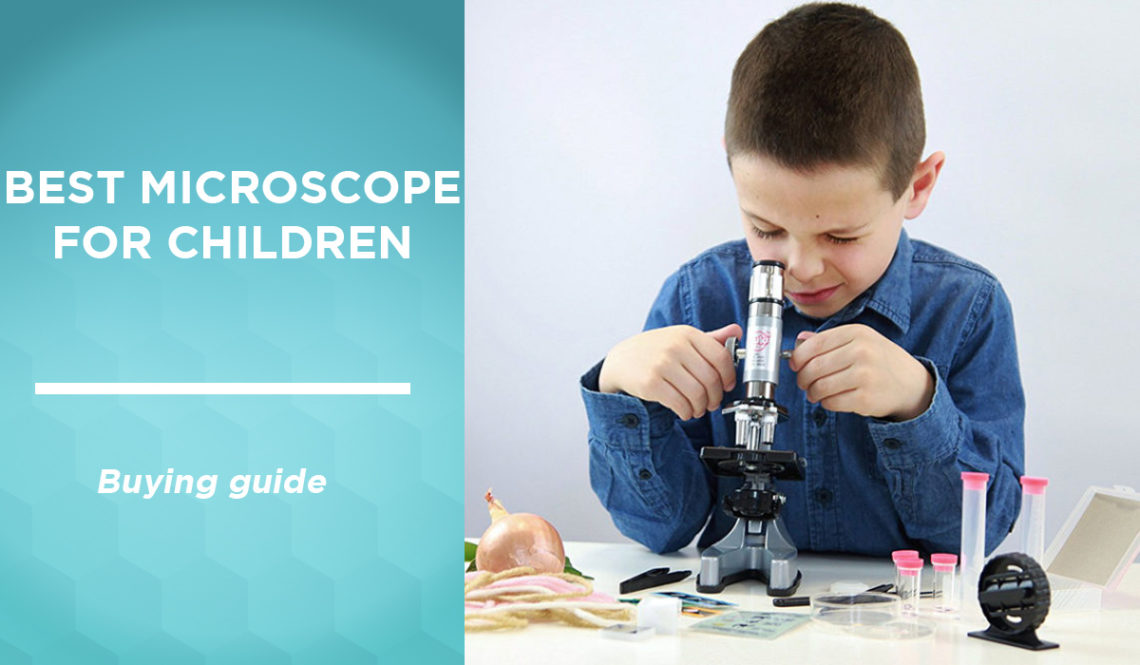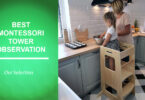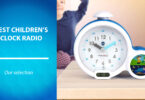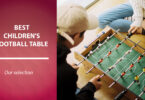Summary
If your little ones reveal a scientist’s soul and are curious to discover the hidden faces of the microscopic world, nothing better than a children’s microscope to invite them to explore! Through boxes specially designed for children, they will be able to observe the microscopic details of insects, flowers, leaves, hair, spices… and anything else they wish! Real little scientists, who will stimulate their concentration, observation and analytical skills with this binocular magnifier.
To choose the ideal microscope for your toddler, discover our comparative buying guide as well as the purchasing criteria and product descriptions to protect awaken the scientist in your child at the best value for money, thanks to our testers and their opinions!
🏆 Current children’s microscope bestseller :
Best children’s microscope: our top 3
Vinco – My First Lab Microscope
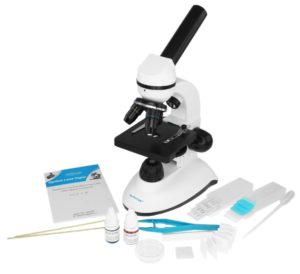
The negative point: the manual provided is only in English …
Find out on Amazon
Paralux Junior LED TP Magnifier + Minerals 60-6230-1

Buki – MR600 – Microscope – 50 experiments

Ideal for beginners, this children’s microscope is more of a toy than a real microscope. The sharpness of the large objectives is a little weak, which makes it impossible to observe clearly if you want a high magnification.
Find out on Amazon
United Scope – AmScope M30-ABS-KT2-W Beginner Microscope Kit
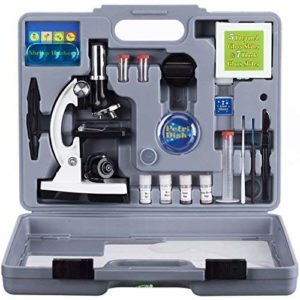
Here’s the rub: the instructions are in English.
Find out on Amazon
Bresser junior 40x-1024x Microscope Set
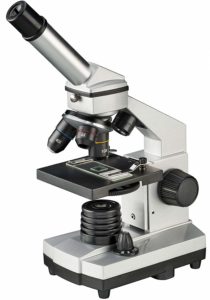
One of the most important advantages of the Bresser Junior Microscope is that you can connect it to your computer to observe what you see with a camera! The images seen in the microscope can then be stored on your computer, to keep track of the first microscopic observations of your little ones!
The price is a little high, but the microscope is complete and qualitative: an investment that is worth it to deepen your toddlers’ knowledge and curiosity.
Find out on Amazon
Why are you giving my children a microscope?
Children’s microscopes have many positive aspects on your toddlers. In addition to being fun, this toy is educational and playful, learning how to use a technical device and how to make observations from it. Your child will deepen his or her knowledge of science by analyzing the microscopy of the objects he or she places under the lens.
In addition to developing his scientific mind, the optical microscope stimulates patience and dexterity, since your cherub must take the time to create his samples, set up the slides and install them before looking at them. Observation, concentration and analytical skills also come into play in this interesting activity. Curiosity is not a bad defect, and will allow them to understand a little better the world around them and its composition.
How to use a junior microscope?
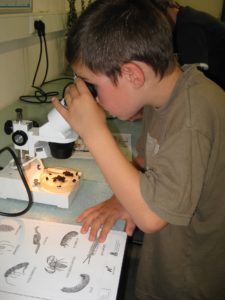
To begin with, take a look at the manual! Although microscopes are quite similar, they do not all work in the same way, and may have particularities. You will learn more about the batteries or recharge needed to operate the microscope, and the precautions to take when handling it. It will also teach you how to adjust the settings of the different lenses to optimize magnification.
The next step is to make the adjustments, which are the basis of the microscope results. If the lamp or lens settings are not correct, the images will be blurred, which may disappoint more than one person. The light must be directed towards the mirror to reach the optical tube. Once the light is set, you can adjust its intensity to achieve the desired result while you watch.
Once the light has been set, you just need to carefully remove the blade you wish to observe. The blade slides under the springs of the turntable. Align the observation area with the center hole to be sure to locate it under the microscope.
You can now choose the magnification you want. Remember to always start with the weakest, then zoom in little by little until you get the expected results. Once you have the desired magnification, all you have to do is adjust by adjusting the sharpness, lowering the lens to the maximum and then gently raising it again until the vision is clear.
Handle the microscope and accessories with care during all these adjustment and observation steps! The various elements are fragile and require delicacy and dexterity to ensure that the microscope’s life does not end with the first use. Also remember to take care of it by cleaning it after each use and storing it away from dust.
Children’s microscopes: the most popular brands
Whether for children or specializing in science or optics, many brands have taken on the task of providing microscopes suitable for all ages. Among the many brands of children’s microscopes, the most popular ones stand out from the crowd with quality and recognized products:
- Buki, a children’s toy store that offers a wide range of play and early learning products.
- Nature et Découvertes, a follower of well-being and development, the aim of the school is to enrich children’s discoveries and knowledge
- Bresser, this German brand is the European leader in the construction of instrumental optics products. As a specialist, it also offers consumer products to share its know-how.
- My First Lab, a company specializing in the design of children’s microscopes, offers a wide choice for all needs and all ages to introduce toddlers to science.
Where to buy a child’s microscope?
Whether in store or on the internet, you will find a wide selection of children’s microscopes to meet your needs.
If you want to find what you’re looking for in a store, you can go to the big game stores like Oxybul, Toys’R’Us or Cultura. Signs such as Boulanger, Nature & Découverte or FNAC will also be able to offer you many products.
On the internet, you will have to sort through the list to find the most suitable children’s microscope, which you will find on resale platforms such as Amazon, or on specialised sites.
Best children’s microscopes: why trust us?
Thank you for reading this article! Because we know that it is not always easy to make the best choice without trying, each of our recommendations is the result of a long work of analysis of consumer opinions on flagship and little-known products on the market, of comparison of prices and technical characteristics, but also and above all of tests by a team of men and women constantly renewed in order to keep a real objectivity to help you in your purchasing process.
All the purchasing criteria are scrutinized for the realization of our comparative guides: budget, level of range, functional and practical aspects, design, pack and accessories, safety… All this in order to help you choose the products best suited to your needs, desires and constraints on a daily basis, at the best price!

